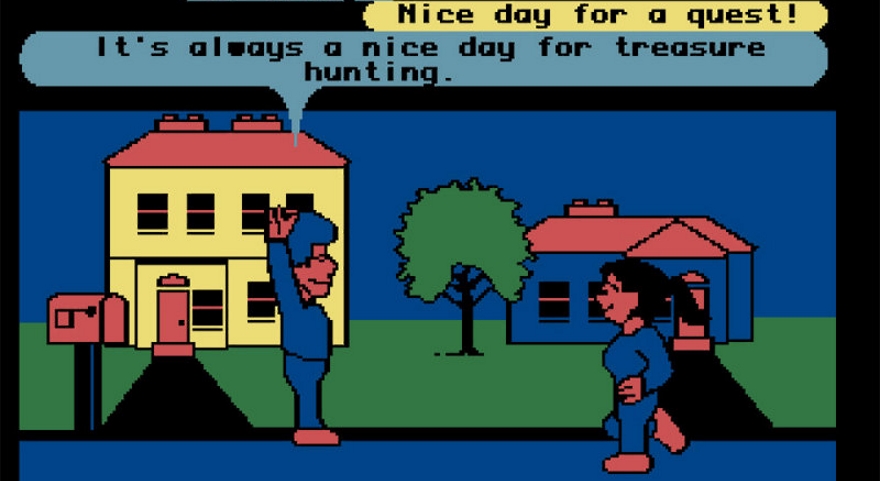
Timing is, as they say, everything. A good idea presented at the wrong time (and perhaps in the wrong way) might fizzle hard when it should have succeeded. Interesting initiatives might only really take off the third or fourth time they appear. And certain releases might find themselves shoved off to one side in favor of something bigger hitting the scene.
We have seen this happen in myriad ways in the MMORPG industry over the decades. Today, we want to turn around and give some of these games recognition for being ahead of their time either in design, initiative, or focus.
Runes of Magic: Wrapping itself in the free-to-play model from the start
Now there are several examples of MMOs that embraced F2P before Dungeons and Dragons Online made it the hot trendy thing in ’09, but what is often overlooked is how Runes of Magic launched with that model that same year and offered a World of Warcraft-like experience (obscenely so, as this was as close to a clone as we’ve ever seen) without a subscription. For a while there, RoM benefited greatly from its free model, but as F2P went more widespread, the MMO had few other virtues to help it stand out from the crowd.
The Sims Online: Player Housing the MMO
On paper, The Sims Online had everything it needed to be a smash hit. The world was bonkers for The Sims back in 2000 and a sequel was on the way, so an online version where players could mingle and share their own housing creations seemed like a perfect idea. After all, MMO players have shown great love for robust housing systems. However, the game design wasn’t as well-thought-out as it should’ve been and the decision to stick with The Sims’ 2-D graphics in an increasingly 3-D world helped nothing.
RuneScape: Removing obstacles to entry
Back in the early 2000s, joining an MMO was much more of a hassle than it was today. You had to have a good internet connection, a machine that could handle the graphics, and money for monthly payouts. RuneScape came along in 2001 and tossed “how it’s been done” out the window, creating the most easy-to-access MMO yet. With no subscription required and a client that ran in browsers, broke kids and those with older computers had an opportunity to dip their toes into MMORPGs. It’s no wonder that this ended up being the first MMO for many.
LucasFilm’s Habitat: Playing in a social sandbox
Ninteen eighty-six’s Habitat was one of the most astounding proto-MMOs ever made, a fully functional graphical massively multiplayer game that could be accessed by Commodore 64s over 300 baud modems. Instead of fighting nonstop, Habitat’s focus was being a social sandbox with loads of interactive elements and toys for players to explore together.
PLATO: Making multiplayer gaming possible in the 1960s
Speak about ahead of its time, the educational computer network known as PLATO arrived on the scene in the early 1960s to offer schools and universities ways to connect computers and allow interactions between users. This soon morphed into online games, including more than one RPG, that saw early prototypes of features we take for granted today, such as object permanence, forums, instant messaging, video game bosses, real-time play, crafting, waypoints, and corpse runs.
Monster: Opening the door for player-created content
An unassuming multiplayer text adventure game named Monster that was made by a college student in 1988 took on a life of its own when it was released to the community with a blessing to expand upon its basic structure. It was relatively easy for players to create their own areas and puzzles for others to experience, morphing the title into a collaborative project.
Underlight: Roleplay instead of combat
Roleplaying was at its height in text-based MMOs, with imaginations transcending the limited boundaries of screen visuals. The creators of 1998’s Underlight hoped to bring a roleplaying renaissance to the community, roping in all of its players into creating a shared story. Combat wasn’t the main event, even while players could jump into an enemy and roleplay those encounters.
The 4th Coming: Taking ARPGs online
When MMORPGs took off in the late ’90s, the question was, “What else could we make massively multiplayer?” Diablo was really hot at the time, so The 4th Coming basically took that format and took it online, complete with a morality meter, a rebirth system, and several different types of rulesets.
Sovereign: Persistent RTS worlds
Speaking of trying out different game genres in a massively multiplayer setting, Verant Entertainment’s follow-up to EverQuest tried to do just this with the then-popular real-time strategy format. Sovereign claimed to feature planet-wide battles of up to 50,000 units at a time, but sadly, the game died in development before it could launch.
Battletech and Air Warrior: Vehicular battle royale
Pretty much from the onset of the history of online gaming, PvP has been a prominent and active component of many pioneering games. Forefront in the PvP space was Kesmai, who put out titles like 1986’s Air Warrior and 1991’s Multiplayer BattleTech to deliver intense online bouts between small but sizable groups of players. Looking forward to the popularity of games like H1Z1 and Fortnite, it’s easy to see how people were getting their battle royale fix decades ago.
 Everyone likes a good list, and we are no different! Perfect Ten takes an MMO topic and divvies it up into 10 delicious, entertaining, and often informative segments for your snacking pleasure. Got a good idea for a list? Email us at justin@massivelyop.com or eliot@massivelyop.com with the subject line “Perfect Ten.”
Everyone likes a good list, and we are no different! Perfect Ten takes an MMO topic and divvies it up into 10 delicious, entertaining, and often informative segments for your snacking pleasure. Got a good idea for a list? Email us at justin@massivelyop.com or eliot@massivelyop.com with the subject line “Perfect Ten.”

















